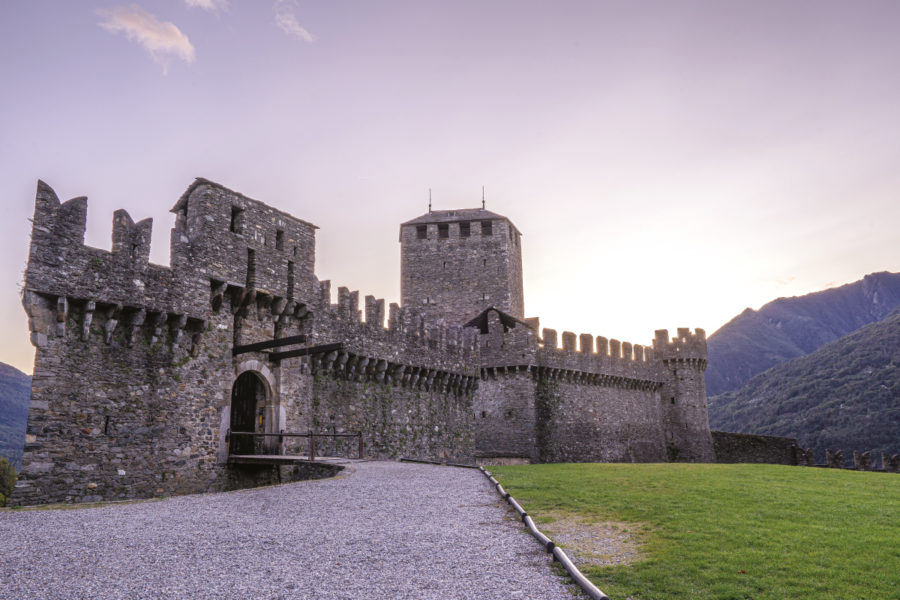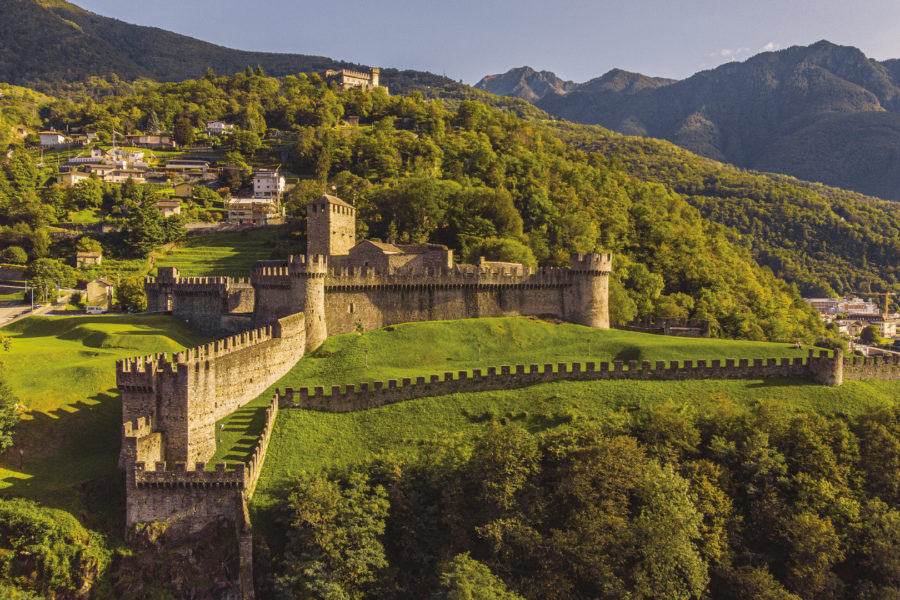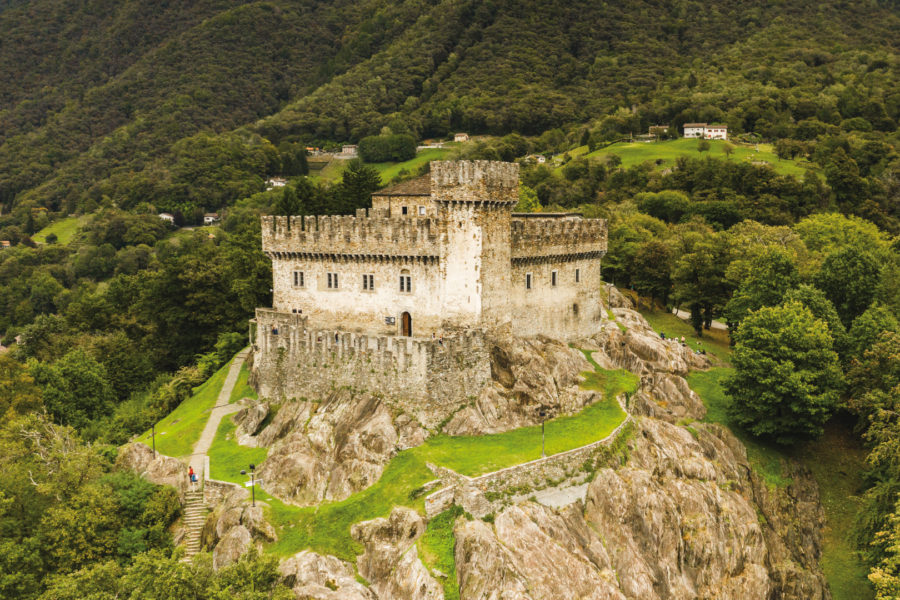Certain sites of cultural and natural heritage have an outstanding universal value that requires them to be placed under the protection of all humanity. To this end, they are entered on the UNESCO World Heritage List.
The Fortress of Bellinzona, consisting of the three castles of Castel Grande, Montebello, and Sasso Corbaro, as well as the bulwark and the town walls, is one of the most important sites of historical and architectural heritage in Switzerland. Recognised as being of international importance, the following unique and outstanding value was highlighted when the site was included in the UNESCO World Heritage List in 2000:
The fortifications of Bellinzona, located in the Canton of Ticino, in Italian-speaking Switzerland south of the Alps, are the only visible example in the Alpine region of medieval military architecture composed of several castles united by fortified walls to protect the population. The walls blocked off the entire valley of Ticino and the ramparts surrounded the town.
This makes Bellinzona a unique specimen among the imposing fortifications of the fifteenth century, both for its size, influenced by the site and its topography, and for the excellent state of conservation of the entire complex. The origin of Bellinzona is linked to the strategic position of the site which, thanks to the Ticino Valley, controls access to the main alpine passes that allow passage from the Milanese region, i.e., from all Northern Italy, to the regions located further north, up to the Danube and beyond. The complex consists of three castles and a network of fortifications interspersed with towers and defensive structures that control the Ticino Valley and dominate the town centre.
Three castles, bulwark, and walls of the town of Bellinzona
UNESCO Declaration of Outstanding Universal Value
Discover the UNESCO page dedicated to the Fortress of Bellinzona
DISCOVER







